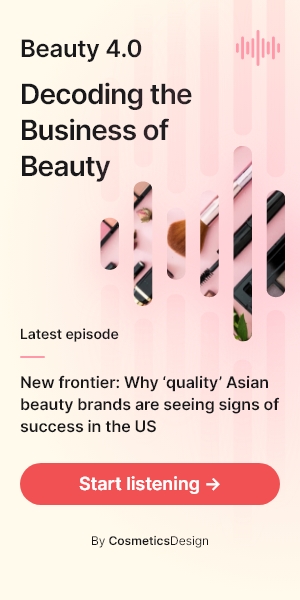Emerging economics hold ‘strong opportunities’ for health and beauty: GlobalData
![A market like India offers great growth promise in health and wellness, for example, as per capita income continues to surge [Getty Images]](https://www.cosmeticsdesign-europe.com/var/wrbm_gb_food_pharma/storage/images/_aliases/wrbm_large/publications/cosmetics/cosmeticsdesign-europe.com/headlines/business-financial/beauty-health-and-wellness-growth-promise-in-emerging-markets-like-india-china-middle-east-and-africa-says-globaldata/16347586-1-eng-GB/Beauty-health-and-wellness-growth-promise-in-emerging-markets-like-India-China-Middle-East-and-Africa-says-GlobalData.jpg)
The global focus on health kickstarted during COVID-19, as citizens worldwide started to invest more carefully and consistently in health – across food, fitness and beauty. But in 2023, were opportunities to target beauty wellness and beauty health still there?
Absolutely, said Sumit Chopra, commercial director at market insights firm GlobalData.
“You can clearly see since 2020 the focus on health and wellness as a concept in marketing and communication, in terms of speaking to the markets and talking about this, has significantly increased,” Chopra told attendees at last month’s in-Cosmetics Global tradeshow in Barcelona, Spain.
Not only were beauty executives and board members increasingly referencing health and wellness as “a priority” in company filings, he said, many firms were also filing patents in this space – “a good signal of future disruption”.
Asia, Middle East and Africa
Importantly, Chopra said there were rising opportunities in health and beauty to be found in emerging markets, particularly across Asia, Middle East, North Africa and Africa.
“It’s a lot more important now, when you look at markets like Europe and North America which are slacking. Where do you get the maximum growth in the next ten years? That opportunity will come from Asia to a very large extent,” he said.
Asian markets like India, China and Indonesia, in particular, he said, presented significant health and beauty growth promise. “…We expect the share of entertainment, leisure, health and beauty in markets like India to significantly increase as the per capita income doubles,” he said. “So, there will be a lot of room to experiment and buy stuff.”
However, these were “challenging markets”, Chopra said, defined by a broad set of consumer types and beliefs, so beauty businesses had to be smart when expanding and targeting growth in these markets.
Partnerships and education
Partnerships or acquisitions, therefore, offered one way ‘in’, a strategy many beauty brands had already taken, he said. “Significant investments are happening. People are investing in companies and startups and building partnerships, and we expect this to continue for the next five to ten years,” the director said.
But moving forward, he said consumer education on the ground would also be key, given health and wellness remained a “very small trend” in these markets, albeit growing at a “very fast pace”.
Asked if the definition of health and wellness in beauty differed depending on markets, Chopra told CosmeticsDesign-Europe: “All the markets across the world are exactly looking at the same definition but within them there are various sub-plots, like hygiene, information, transparency and sourcing.”
In India, for example, hygiene was hugely important in the health and beauty movement. In China, he said transparency in terms of ingredient benefits was key, he said. The same could be said for Middle East and Africa with product benefits central.
Understanding and successfully tapping into these nuances, therefore, benefited greatly partnerships in each market, Chopra said, with local bodies, in-country NGOs or even other local brands and businesses.
“I think this will be crucial, which is also where the whole social benefit value system comes into the picture. These are very complex markets, let’s be honest. Whether you look at a market like India, China or Indonesia, I think partnerships (…) could be a very, very good driving factor for growth.”

![Aēsop is today present in 29 markets, has 395 stores and increased its gross sales between 2012 and 2022 by €465m (US$509m) [Image: Aesop Facebook]](https://www.cosmeticsdesign-europe.com/var/wrbm_gb_food_pharma/storage/images/_aliases/wrbm_medium/publications/cosmetics/cosmeticsdesign-europe.com/article/2023/04/04/l-oreal-to-acquire-natura-co-owned-aesop-for-us-2.5bn-and-grow-brand-globally/16305295-1-eng-GB/L-Oreal-to-acquire-Natura-Co-owned-Aesop-for-US-2.5bn-and-grow-brand-globally.jpg)
![Consumers are increasingly open to dietary intervention strategies for skin health since the COVID-19 pandemic [Getty Images]](https://www.cosmeticsdesign-europe.com/var/wrbm_gb_food_pharma/storage/images/_aliases/wrbm_medium/publications/cosmetics/cosmeticsdesign-europe.com/article/2023/03/16/beauty-supplements-for-photoageing-with-colourless-carotenoids-promising-finds-review/16254247-1-eng-GB/Beauty-supplements-for-photoageing-with-colourless-carotenoids-promising-finds-review.jpg)
![Olive Young is making inroads into the Middle East region. [Wakemake]](https://www.cosmeticsdesign-europe.com/var/wrbm_gb_food_pharma/storage/images/_aliases/wrbm_medium/publications/cosmetics/cosmeticsdesign-asia.com/headlines/business-financial/olive-young-testing-the-waters-in-middle-east-with-makeup-brand-wakemake/16177478-1-eng-GB/Olive-Young-testing-the-waters-in-Middle-East-with-makeup-brand-Wakemake.jpg)






![Chinese study highlights mental health challenges in atopic dermatitis, emphasising holistic patient care. [Getty Images]](https://www.cosmeticsdesign-europe.com/var/wrbm_gb_food_pharma/storage/images/_aliases/wrbm_tiny/publications/cosmetics/cosmeticsdesign-asia.com/headlines/formulation-science/chinese-research-linking-atopic-dermatitis-to-mental-health-underscores-need-for-holistic-care/17040623-1-eng-GB/Chinese-research-linking-atopic-dermatitis-to-mental-health-underscores-need-for-holistic-care.jpg)








